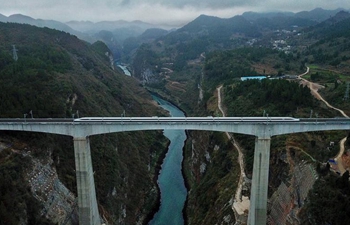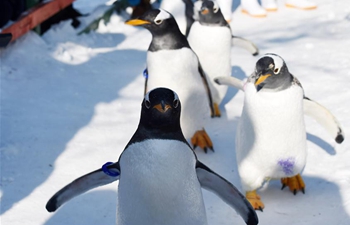WASHINGTON, Jan. 25 (Xinhua) -- Chinese researchers are discovering unexpected genetic connections between individuals on opposing sides of Eurasia with direct DNA sequencing.
Their study suggests a complex history that may represent early gene flow across Eurasia or an early population structure that eventually led to Europeans and Asians.
In a review published in the journal Trends in Genetics on Thursday, scientists at the Chinese Academy of Sciences in Beijing discuss the genetics of ancient individuals from Europe and Western Asia between 45,000 to 7,500 years ago.
The authors summarized work that investigated the genomes of more than 70 ancients in the Eurasian family tree.
"Aside from these individuals, it is a fact that sampling for the Eurasian region is sparse for all time periods except the present-day," says the correspondent author Fu Qiaomei, a paleogeneticist at the Chinese Academy of Sciences.
"But with the information from the several individuals available for ancient DNA sequencing we do have hints at interesting population structure, migration and interaction in East Asia."
The researchers learned that in Eurasia between 35,000 and 45,000 years ago, at least four distinct populations were present. These were early Asian and Europeans, as well as populations with ancestry hardly found or not at all in modern populations.
It shows that, by 7,500 to 14,000 years ago, the populations across Eurasia shared genetic similarities, suggesting greater interactions between geographically distant populations.
These analyses also revealed at least two Neanderthal population mixing events, one approximately 50,000 to 60,000 years ago and a second more than 37,000 years ago.
Fu and colleagues hope to extend this type of sequencing and analysis to learn more about the genetic prehistory of East Asia and other regions, including Oceania, Africa, and the Americas.
"All of those areas have a rich human prehistory, particularly in Africa, so any ancient DNA from those continents will likely resolve some major questions on human migration," she says.

















